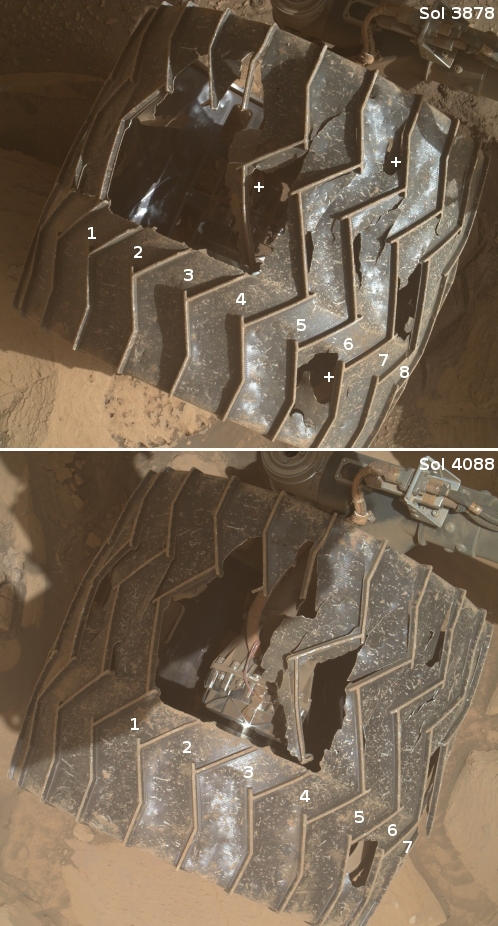The volcanic world of Io, as seen by Juno in all its fly-bys

Click for full resolution image.
The mosaic of images above, reduced and sharpened to post here, was compiled by citizen scientists Gerald Eichstädt, Jason Perry, and John Rogers from images taken of the Jupiter moon Io during the three close fly-bys by the orbiter Juno that occurred during its 55th, 57th, and 58th orbits. From the caption:
Global map of Io by JunoCam, combining maps from PJ55, PJ57 and PJ58. Both the sunlit side and the Jupiter-lit-dark side are included. PJ55 map by Gerald Eichstädt; PJ57 map by Jason Perry; PJ58 map by Gerald Eichstädt and John Rogers. Some scaling and shifting was performed in order to align the maps with each other and with the USGS Voyager/Galileo map. Colours were adjusted for better compatability. –John Rogers.
A labeled version, showing the names of many volcanoes but only of the areas photographed during the most recent 58th orbit fly-by on February 3, 2024, can be seen here.
As Juno’s later fly-bys will be progressively farther away, we will no longer get better views of Io until another spacecraft arrives in a Jupiter orbit capable to returning to Io, possibly decades from now. Though Europa Clipper will arrive in Jupiter orbit April 2030, that orbit is designed to repeatedly fly close past Europa, and will likely never get close to Io.
Thus, this map provides a baseline for determing any changes that occur on Io in the coming years.

Click for full resolution image.
The mosaic of images above, reduced and sharpened to post here, was compiled by citizen scientists Gerald Eichstädt, Jason Perry, and John Rogers from images taken of the Jupiter moon Io during the three close fly-bys by the orbiter Juno that occurred during its 55th, 57th, and 58th orbits. From the caption:
Global map of Io by JunoCam, combining maps from PJ55, PJ57 and PJ58. Both the sunlit side and the Jupiter-lit-dark side are included. PJ55 map by Gerald Eichstädt; PJ57 map by Jason Perry; PJ58 map by Gerald Eichstädt and John Rogers. Some scaling and shifting was performed in order to align the maps with each other and with the USGS Voyager/Galileo map. Colours were adjusted for better compatability. –John Rogers.
A labeled version, showing the names of many volcanoes but only of the areas photographed during the most recent 58th orbit fly-by on February 3, 2024, can be seen here.
As Juno’s later fly-bys will be progressively farther away, we will no longer get better views of Io until another spacecraft arrives in a Jupiter orbit capable to returning to Io, possibly decades from now. Though Europa Clipper will arrive in Jupiter orbit April 2030, that orbit is designed to repeatedly fly close past Europa, and will likely never get close to Io.
Thus, this map provides a baseline for determing any changes that occur on Io in the coming years.







